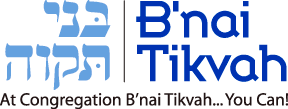(page 336 in The New Machzor/page 170 Lev Shalem)
The prayer Hayom is a congregational favorite for a variety of reasons. First, it signals that we are coming to the close of long Rosh Hashanah services. Second, it almost always has a joyful, upbeat melody. Third, everyone wonders how in the world Cantor Rockman will fit the melody to the outrageous sixth line, which is twice as long as all the others.
But beyond all of that, the theme of the prayer, with its repeated drumbeat of “Hayom, Hayom, Hayom,” “today, today, today,” echoes Dr. Martin Luther King Jr.’s famous line from the March on Washington: “the fierce urgency of now.” “There is,” he said, “such a thing as being too late. This is no time for apathy or complacency. This is a time for vigorous and positive action.” It would be hard to imagine a better way to sum up what the High Holy Days are supposed to be all about.
Originally the prayer was an alphabetical acrostic, so it had three times as many lines as it has in our prayer book. I suspect that as the service grew longer over time, the desire to finally bring them to an end grew proportionately. Nevertheless, we should give some thought to why the rabbis wanted us to put so much emphasis on “today.”
I suspect it has to do with evasion. If we do not focus on today, then we can focus on yesterday. We can drift off into nostalgia (“the way we never were”) or else be wracked by unceasing guilt. Or, we can focus on the future—the way we wish things will be, or the way we worry they won’t be. Like in the joke: the optimist says, “This is the best of all worlds” and the pessimist says “You’re right.”
To which our liturgy responds: forget all that! Be here now. Today. Hayom. Pour everything into this moment—its possibilities, its passion, its purity.
